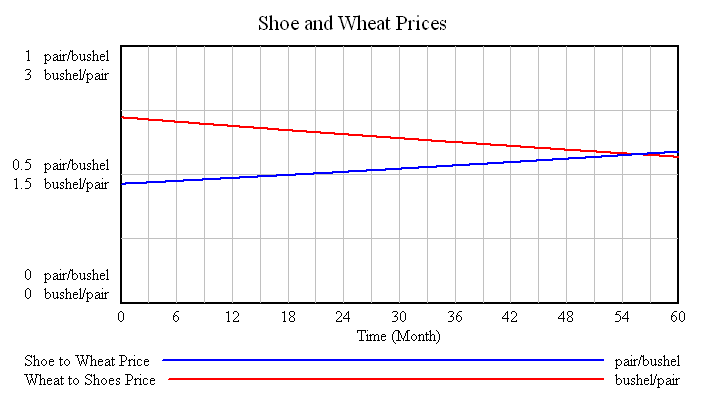The Free Market Center
The Free Market Center
| Shoe Production Increases | 2.00%/Month |
| Wheat Production Fixed | 0.00%/Month |
Now, we begin to see the interrelationship of products in the market. The supply of one product affects the exchange ratio of both.

In this case shoe production increases by 2% each month, causing the price of shoes, in units of wheat, to decline each month. At first, this seems contradictory. It means that it will require fewer and fewer bushels of wheat to buy each pair of shoes (the red line).
At the same time the price of wheat in units of shoes increases. In other words, it will require more and more pairs of shoes to buy each bushel of wheat (the blue line).
(Please ignore the fractional units; they would not trade 0.365 pairs of shoes. This exercise focuses on concept.)
As with the previous page, on which all production remains fixed, the exchange ratios remain reciprocal throughout the 60 month period.
For example:
In month 30:
the Shoe to Wheat price equals 0.52 pair/bushel
the Wheat to Shoes price equals 1.92 bushel/pair
1/0.52 = 1.92
1/1.92 = 0.52
These reciprocal relationships remain consistent through the rest of these examples. (Please allow for rounding.)
© 2010—2020 The Free Market Center & James B. Berger. All rights reserved.
To contact Jim Berger, e-mail: